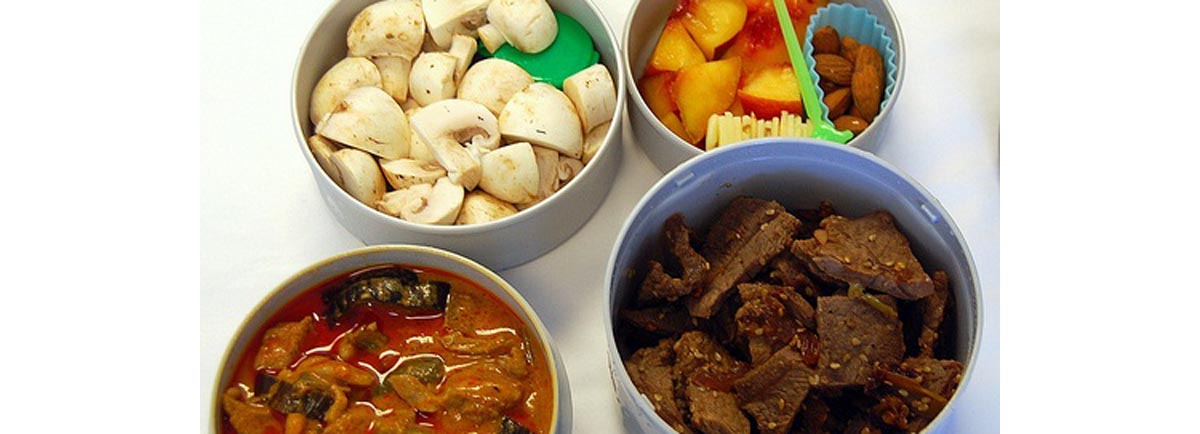Table of Contents
When you’re trying to lose weight, it seems as if every minute detail could potentially make or break your diet. One such issue is meal frequency, so how often should you eat for optimal results?
As is so often the case, the answer here is “It Depends.”
As already discussed, there are no real definite physiological advantages in favor of either approach.

For the average person with a family, hectic social life and working a nine to five office job, 3 meals a day may work better. In the morning, make sure you have time for a good breakfast. Research shows that those who eat breakfast tend to have higher dieting success rates. This may be entirely coincidental, as there are plenty of people who can skip breakfast and get through to lunch with no worries whatsoever, but on the whole, eating breakfast does help you make better food choices for the rest of the day.
Read more: 1500 Calorie Diet – How Does It Look Like?
When adopting a three meal a day diet, your breakfast should be roughly one third of your total calories for the day. The good news is that this probably means your new breakfast is bigger. Get some good quality protein in there in the form of eggs, turkey bacon, Greek yogurt or a protein shake. Add some carbs from oats, fruits or wholegrain toast or wraps, and make sure you’ve got fat too – nuts, avocado, peanut butter or full fat dairy products like butter or whole milk are good choices.
Go through until lunch, only consuming non-calorific beverages such as water and black tea or coffee.
At lunch, follow the same guidelines as breakfast, but change your food sources.
Same goes in the afternoon – plenty of fluids, and you can chew gum if you get cravings, but you should keep your calorie intake to the bare minimum. Eat the final third of your calories at dinner.
If you’re exercising as well as dieting, try to train close to one of your meals, so that your body has enough energy to perform, and ample calories to recover.
If you don’t think 3 meals a day will work for you, feel free to go with 6. This works better if you work on the road, or have an active job. You might not always have time to sit down and eat a big meal, and have to grab food on the run.
You still need to make healthy choices, and above all, ensure that you’re eating the right number of calories. One area where many frequent eaters fall down is calories. They trick themselves into thinking that by eating more and more often, they’re burning more calories, and all too soon, end up vastly over-consuming food. Each meal you eat should have around a sixth of your total calories in it. Stick with the same guidelines as above, but make your portions smaller. You may prefer to go for 3 meals and 3 snacks, rather than 6 small meals too.
The frequent feeding option also favors athletes. Training every day, often more than once can be extremely draining and demanding, and a constant supply of nutrients is essential for maintaining optimal health and performance.
Whatever approach you decide to go for, plan carefully, and stick with it.
Go through until lunch, only consuming non-calorific beverages such as water and black tea or coffee.
At lunch, follow the same guidelines as breakfast, but change your food sources.
Same goes in the afternoon – plenty of fluids, and you can chew gum if you get cravings, but you should keep your calorie intake to the bare minimum. Eat the final third of your calories at dinner.
If you’re exercising as well as dieting, try to train close to one of your meals, so that your body has enough energy to perform, and ample calories to recover.
If you don’t think 3 meals a day will work for you, feel free to go with 6. This works better if you work on the road, or have an active job. You might not always have time to sit down and eat a big meal, and have to grab food on the run.
You still need to make healthy choices, and above all, ensure that you’re eating the right number of calories. One area where many frequent eaters fall down is calories. They trick themselves into thinking that by eating more and more often, they’re burning more calories, and all too soon, end up vastly over-consuming food. Each meal you eat should have around a sixth of your total calories in it. Stick with the same guidelines as above, but make your portions smaller. You may prefer to go for 3 meals and 3 snacks, rather than 6 small meals too.
The frequent feeding option also favors athletes. Training every day, often more than once can be extremely draining and demanding, and a constant supply of nutrients is essential for maintaining optimal health and performance.
Whatever approach you decide to go for, plan carefully, and stick with it.
- “An Objective Look at Intermittent Fasting”., By Alan Aragon & Ryan Zielonka, Published on August 8th, 2007, Accessed on August 18, 2012 Retrieved from http://www.alanaragon.com/an-objective-look-at-intermittent-fasting.html
- Photo courtesy of essjay on Flickr: www.flickr.com/photos/essjay/2444692365
- Photo courtesy of kristinhoppe on Flickr: www.flickr.com/photos/kristinhoppe/3843620248

